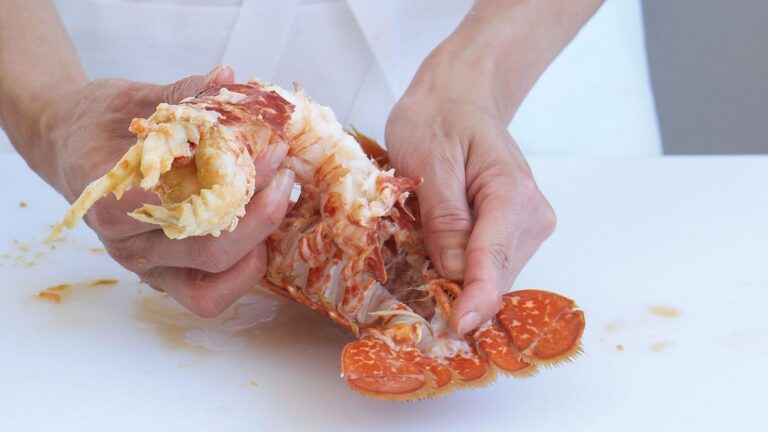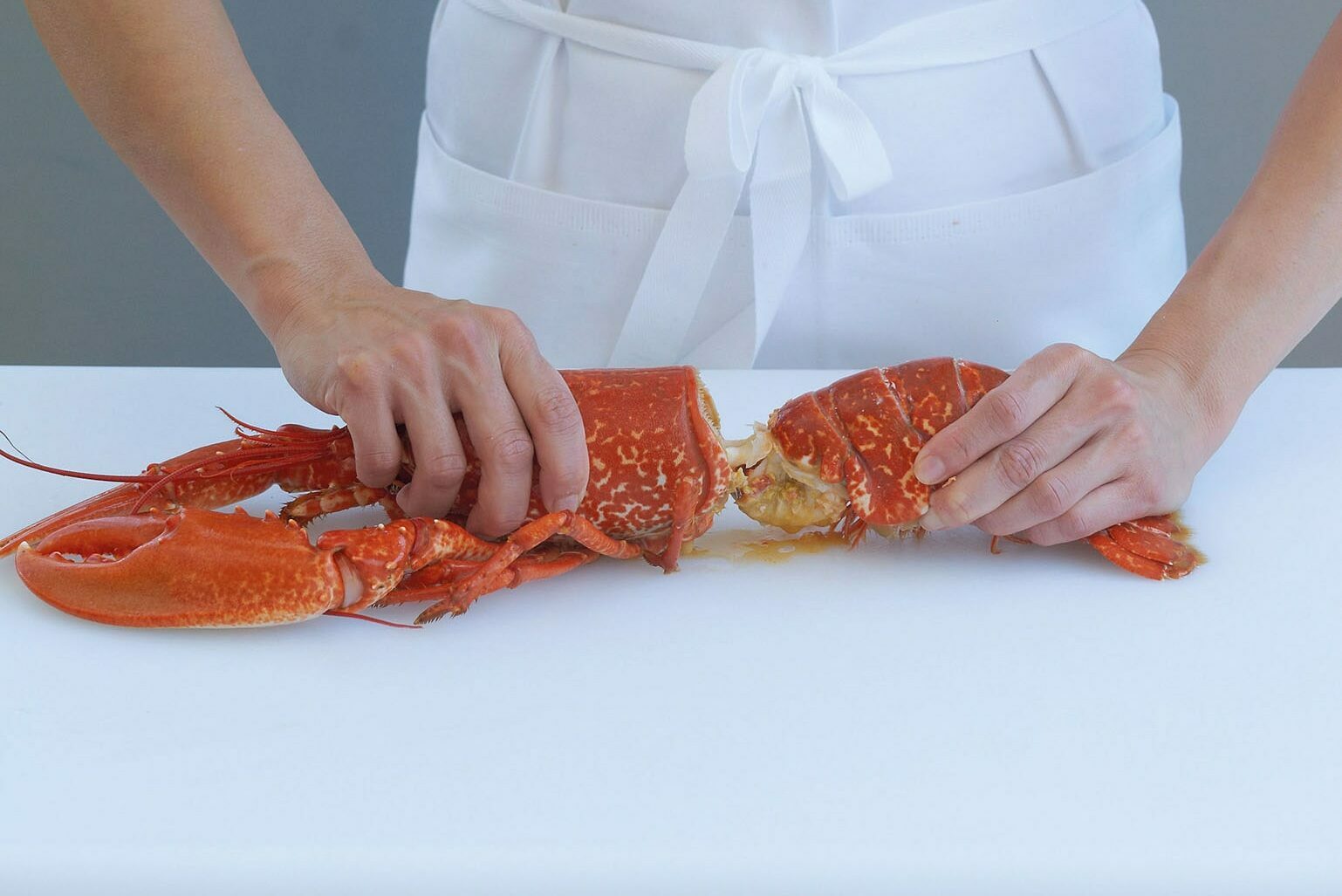
1. Twisting and pulling the head from the tail.
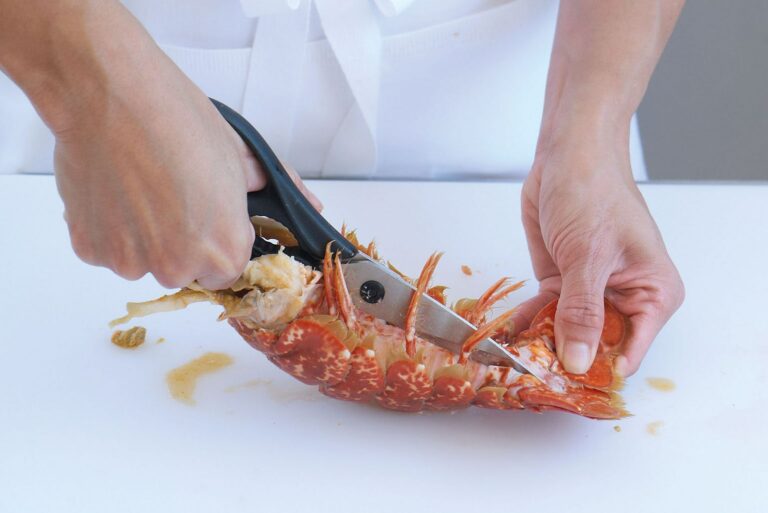
2. Cutting down either side of the belly shell.
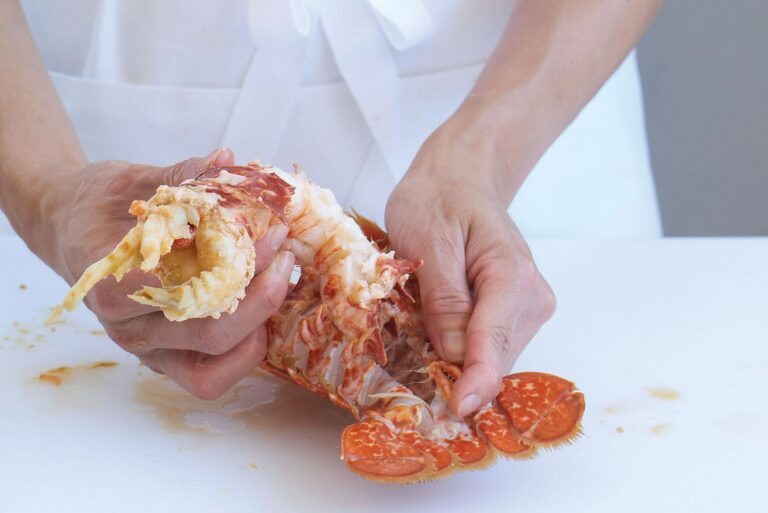
3. Carefully extracting the tail meat.
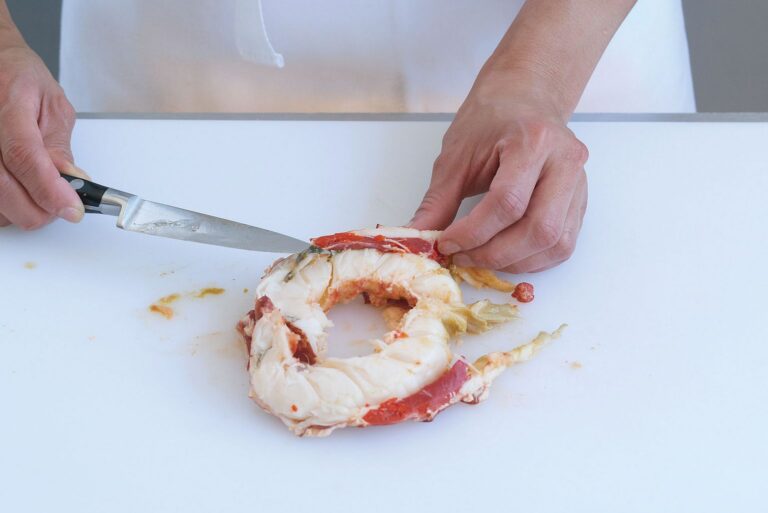
4. Removing the intestinal tract that runs along the length of the tail meat.
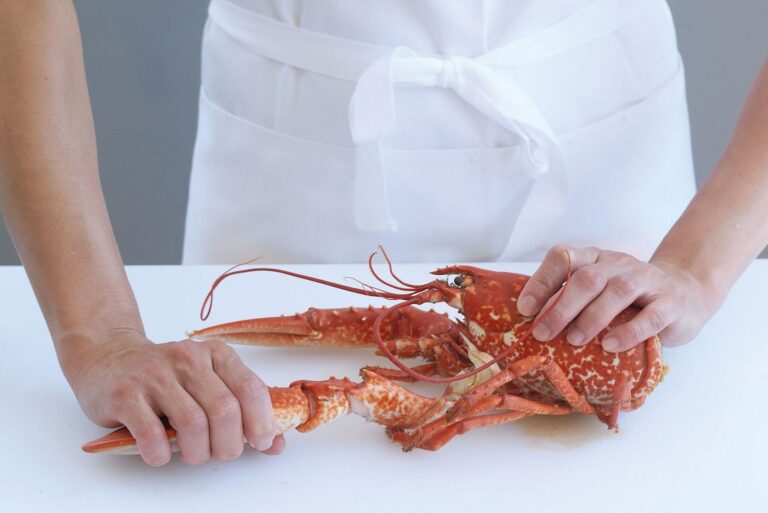
5. Twisting and pulling away the large pincers from the head.
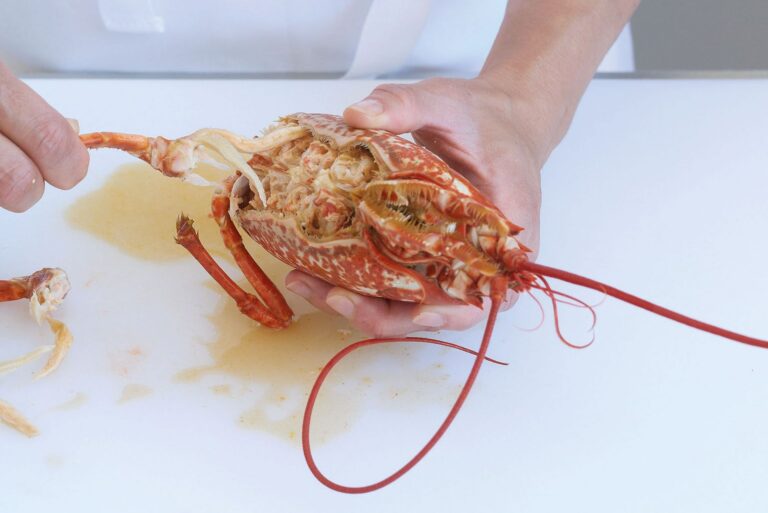
6. Pulling away the legs and removing the feathery gills, which must be discarded.
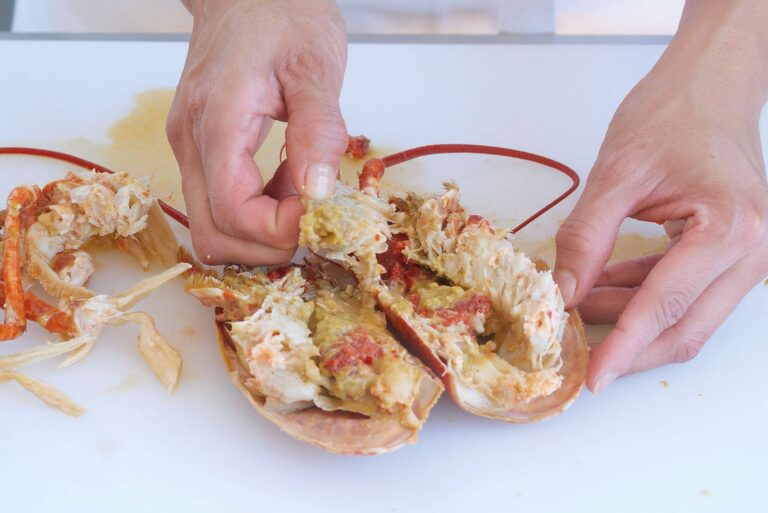
7. Removing the stomach sac.
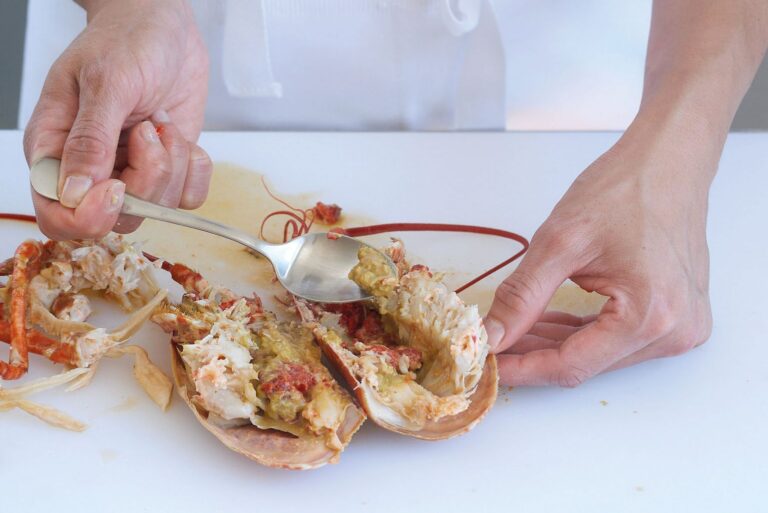
8. Scooping out the liver (tomalley) to set aside.
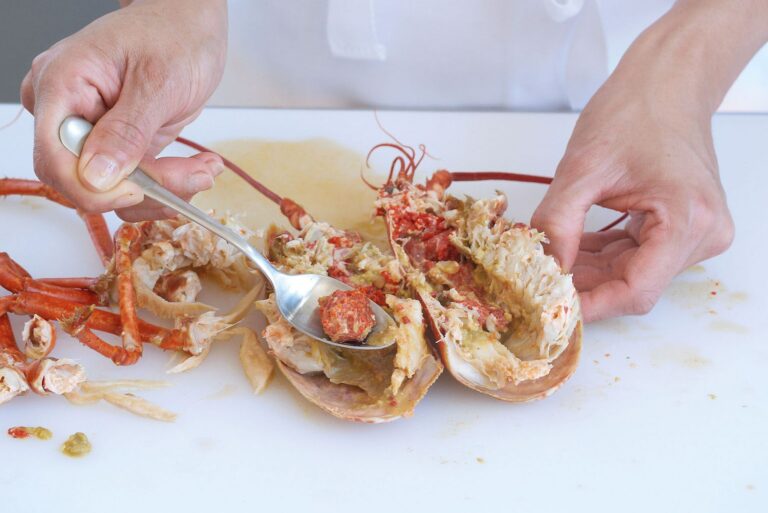
9. Spooning out the coral to save as a delicacy.
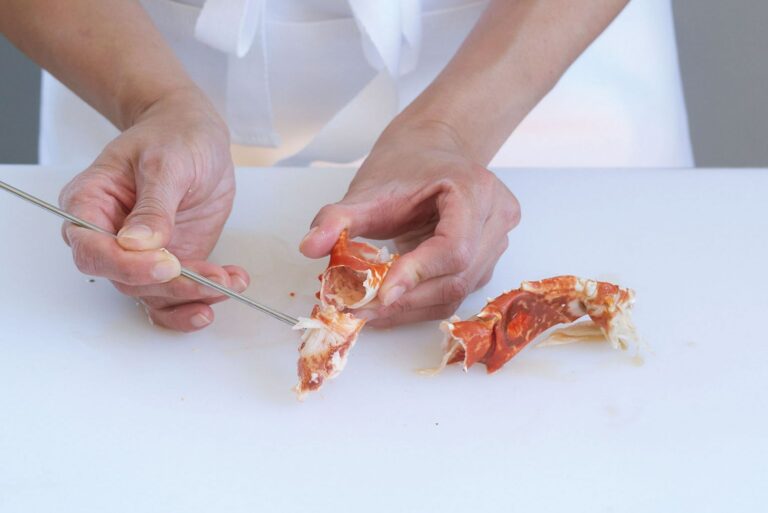
10. Extracting the lobster meat from the crevaces below each pincer.
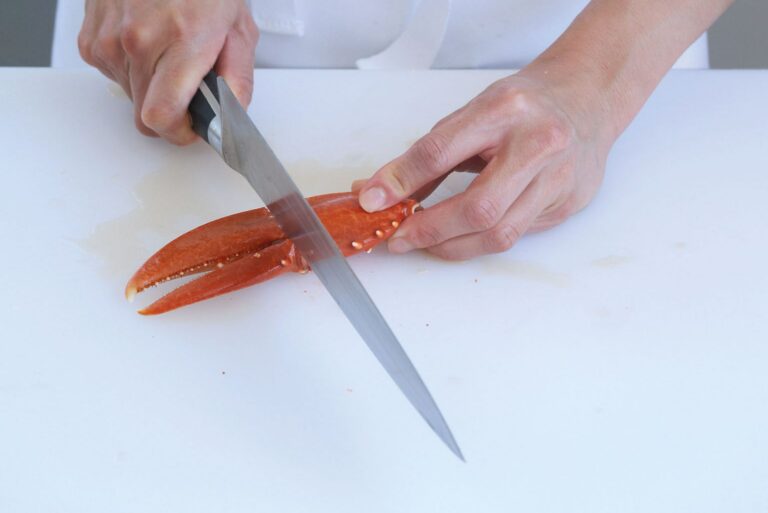
11. Cracking the main claw shell with the back of a knife.
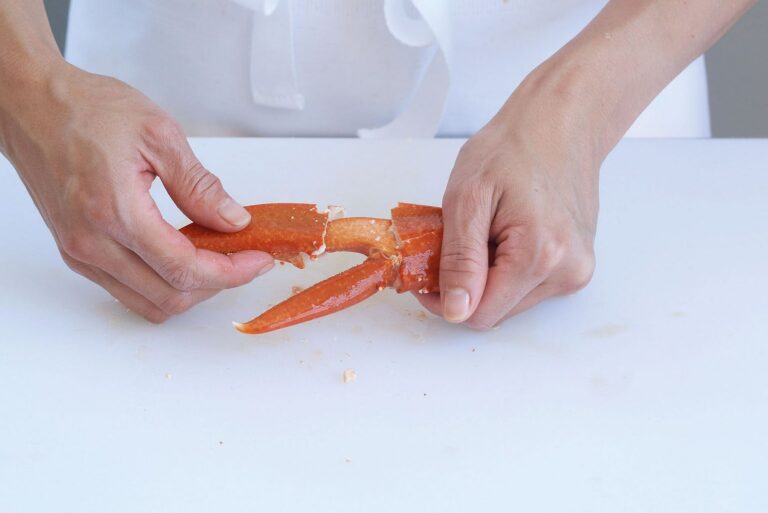
12. Gently pulling the claw shell from the meat, keeping the claw meat whole.
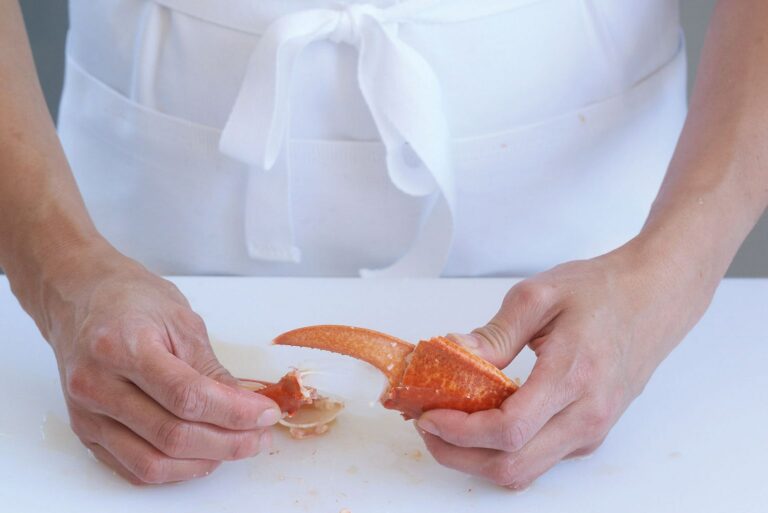
13. Extracting the feather-like bone that runs through the centre of the claw.
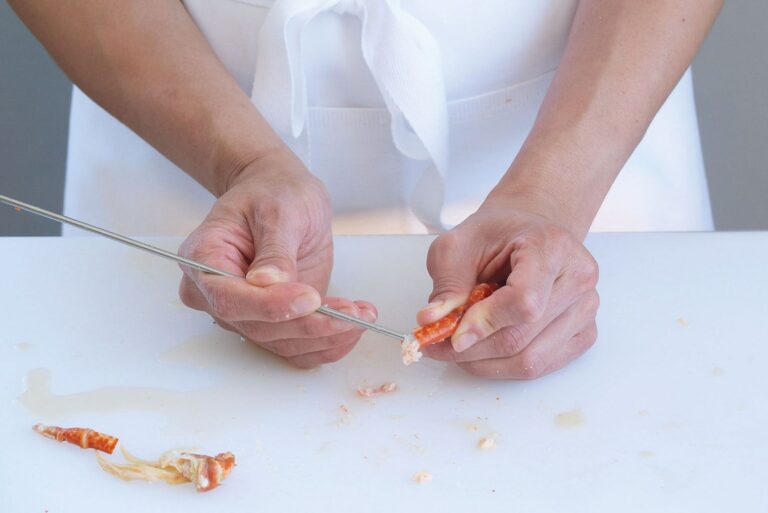
14. Extracting the white meat from the leg.
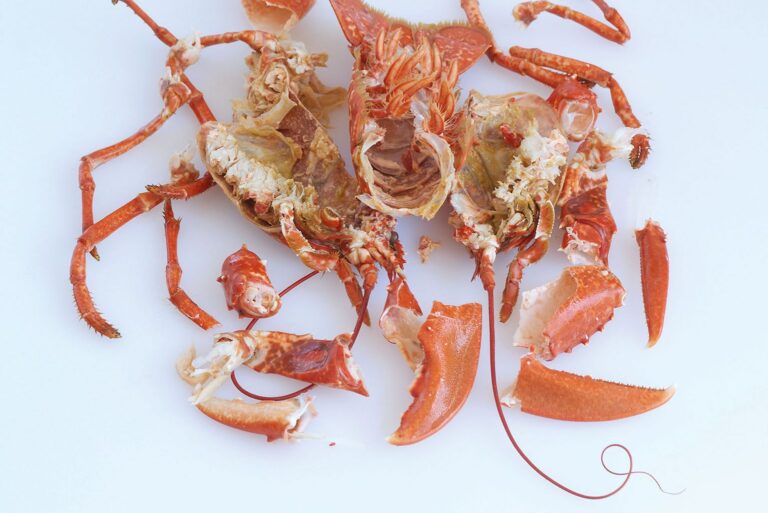
15. The lobster shell, claw and leg pieces set aside, ready to make stock.
Serving simply boiled lobster
Allow ½ lobster per person. Split the cooked lobsters in half lengthways and remove and discard the intestine from the tail and the stomach sac from the head. Serve either hot, with hollandaise or beurre blanc, or simply with clarified butter, or cold, with mayonnaise.
Instructions
- Twist and pull the head from the tail. Set the head aside.
- Using a pair of scissors, cut down either side of the belly shell the length of the tail, where the shell is soft and pliable.
- Peel away the belly shell, then carefully extract the tail meat.
- Depending on how you want to serve the tail meat, the intestinal tract can be removed by making a shallow cut along the back of the tail and removing the tract. Alternatively, cut the tail in half lengthways, then extract and discard the tract.
- For the head, twist and pull away the large pincers.
- Pull away the legs and remove and discard the feathery gills (dead man’s fingers).
- Behind the eyes and mouth is the grit, or stomach sac; remove and discard this.
- Also inside the body will be the liver (tomalley), which will have changed colour from grey to greenish grey when cooked. This is a delicacy and can be kept and eaten, so carefully scoop it out using a teaspoon.
- Often you will also come across roe (coral) which will be a deep red once cooked. The roe is also a delicacy and can be eaten as is or used to flavour and colour a sauce; spoon this out too.
- Break the pincers at the joints. Use a crab/lobster pick or skewer to extract the meat from the crevaces below the claws.
- For the claws, use the back of a large knife or a meat pounder to crack the main claw shell, but try not to crush the claw completely if using a pounder. It is often necessary to crack the shell on both sides.
- Carefully remove any small bits of shell and discard, then gently pull the shell from the claw meat. If carefully done, the claw meat can be removed whole.
- Once removed, locate and extract the feather-like internal bone that runs through the centre of the claws.
- Break the legs at the joints and use a skewer to remove the white meat.
- The shell, claw and leg pieces can be kept to make a shellfish stock and can be frozen until ready to use. The lobster meat is ready for use.
